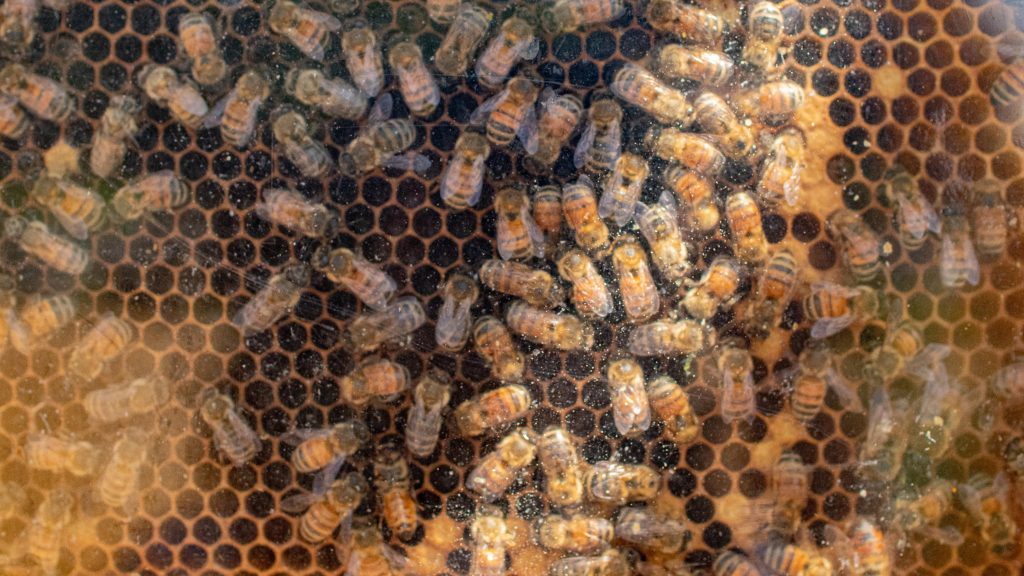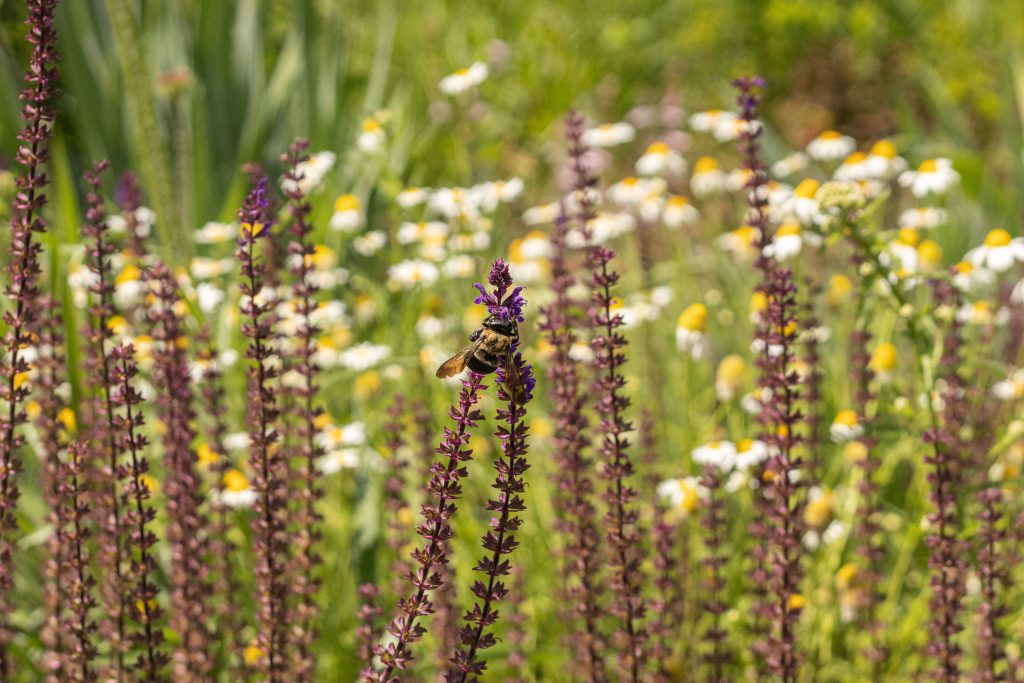Native Bees, Bumble Bees & Honey Bees
Bees, bees, bees! Recently there’s been a lot of talk about saving the honeybees. Many articles explain the importance of honey bees as pollinators, and their declining numbers due to pesticides, diseases and pests. Don’t get us wrong, we love honey bees too. But, there’s another kind of bee you should know about: native bees. Actually, there are many kinds of native bees, all of which were here in the United States long before the honey bee came over from Europe.
Bees, as we know, help pollinate one in every three bites of our food, but how much of this pollination is from European honey bees? And does it matter? We think it does.
“The native bees are actually much better/more efficient pollinators than the honeybees, and they don’t get as much attention usually,” says Lewis Ginter Botanical Garden Exhibitions Assistant Mary Lincoln. So here are some native bee love and some fun facts from Mary.
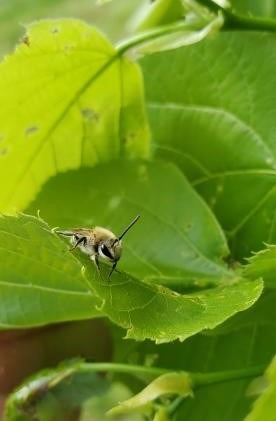
Some native bees, such as the squash bee, like to sleep in flowers. The squash bee prefers squash and pumpkin flowers to use as a bed!
- Did you know that most native bees are solitary and don’t make a hive? Usually, a single female (still called a queen, even though she’s by herself)will make a nest, lay her eggs, and take care of her brood. Native bees will nest in wood (carpenter bees), the ground (miner bees), or even old plant stalks (various kinds). This is part of the reason they tell you not to cut down your dead plant stalks in the winter; there could be bees overwintering inside!
A Bumble Bee Bumbling Makes a Great Pollinator
Bumble bees like the American bumblebee (Bombus pensylvanicus) are social and nest in colonies or hives like honey bees. These hives are usually located in the ground often in holes left by rodents. Bumble bees are great pollinators but unfortunately are not as common as they once were. The easiest way to help native bees like the bumble bee is to plant native plants in your yard and garden.
Squash Bees
One of Mary’s favorite native bees is the squash bee which likes to sleep in squash flowers when they are done with their pollinating work. The squash bee prefers squash and pumpkin flowers to use as a bed. Squash bees are larger than honey bees and carry their pollen on the hairs of their legs. Squash bees (Peponapis and Xenoglossa) are non-social and nest in the ground. Before the European honey bee arrived, squash bees were the big pollinator workhorses. After they’ve pollinated all the squash, pumpkins and gourds, they move onto pollinate other flowers.
Sweat Bees
Some of the most colorful native bees are the sweat bees, so named because they like to land on people to drink their sweat. Halictidae are small, but they can be spectacular shades of blue and green! There are both metallic and non-metallic sweat bees and these bees are fairly common. Native sweat bees can be solitary, communal, semi-social or change their sociability depending on the season. Most nest underground or in rotting wood.
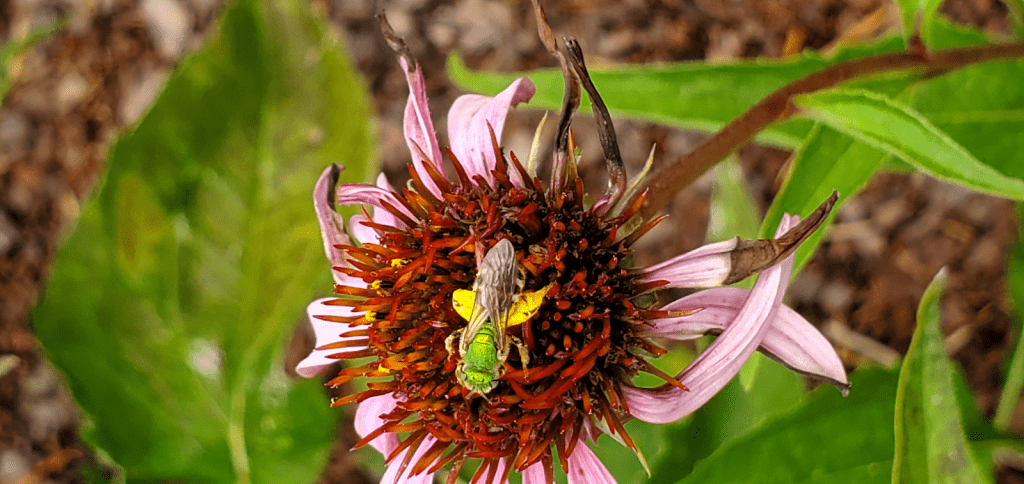
Some of the most colorful native bees are sweat bees, so named because they like to land on people to drink their sweat. They are small, but they can be spectacular shades of blue and green!
Male Bees
All the worker bees in a hive are females, so you may know more about them. Here are some facts about male bees!
- Male bees cannot sting because bee stingers are actually modified ovipositors (egg-laying tubes). This is true of both honeybees and natives.
- Male bees of many native species also aren’t usually allowed to spend the night in nests with the females, so more of the bees you see sleeping outside in the morning will be males.
- You can tell a male bumble bee or carpenter bee from a female by the patch of yellow on his face (aptly termed a “mustache.”) Male carpenter bees tend to be territorial, and will sometimes get in your face to defend their territory! However, as mentioned above, they cannot sting; the worst they’ll do is bonk into you.
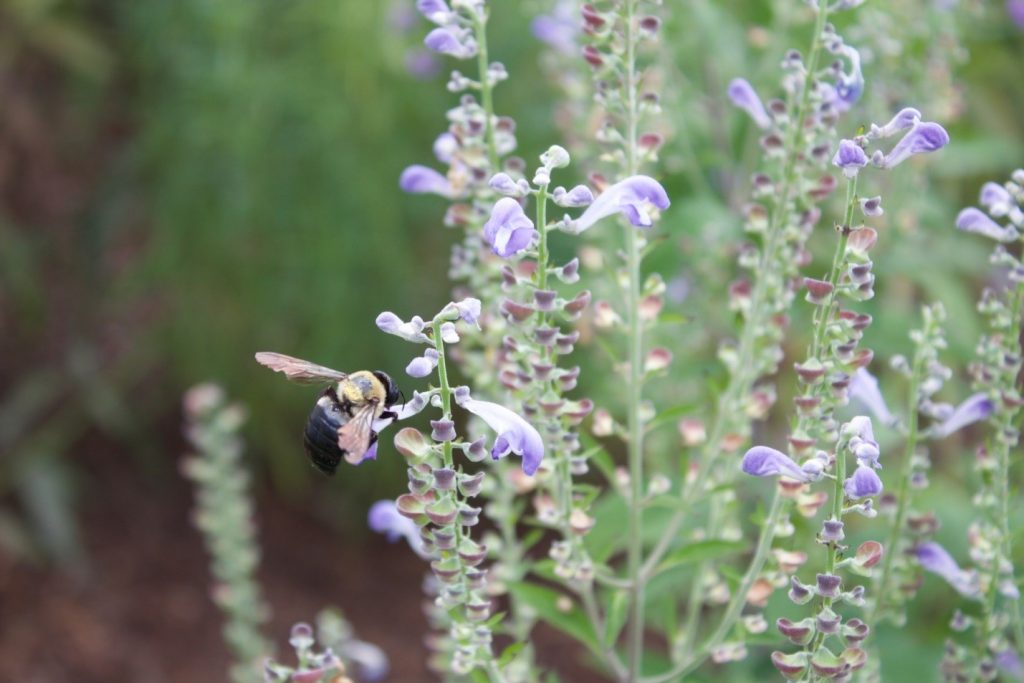
A carpenter bee (Xylocopa micans) visits rough skullcap (Scutellaria integrifolia) in a native flower bed located north of Lewis Ginter’s Conservatory.
Carpenter bees are the largest species of native bee in Virginia. Apart from their size, you can tell them from a bumble bee by their shiny abdomen (a bumble bee will have a furry abdomen). Carpenter bees are not aggressive (except again, for the harmless males), and are great pollinators!
Garden Exhibitions Assistant Mary Lincoln loves sharing her knowledge of pollinators and other bugs with you. She would love to talk to you more about bees and other insects at The Secret Lives of Bugs — Native Invertebrate Micro Exhibit Saturday – Wednesday, 10 a.m. to 2 p.m., now through October.
Want to learn more about our native Carpenter bee and the European honey bees in the demonstration hive at the Apiary? We think you’ll enjoy these two recent videos from Children’s Educator Kelsey Dean.
